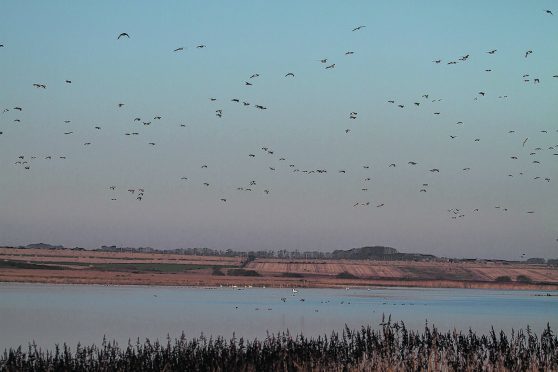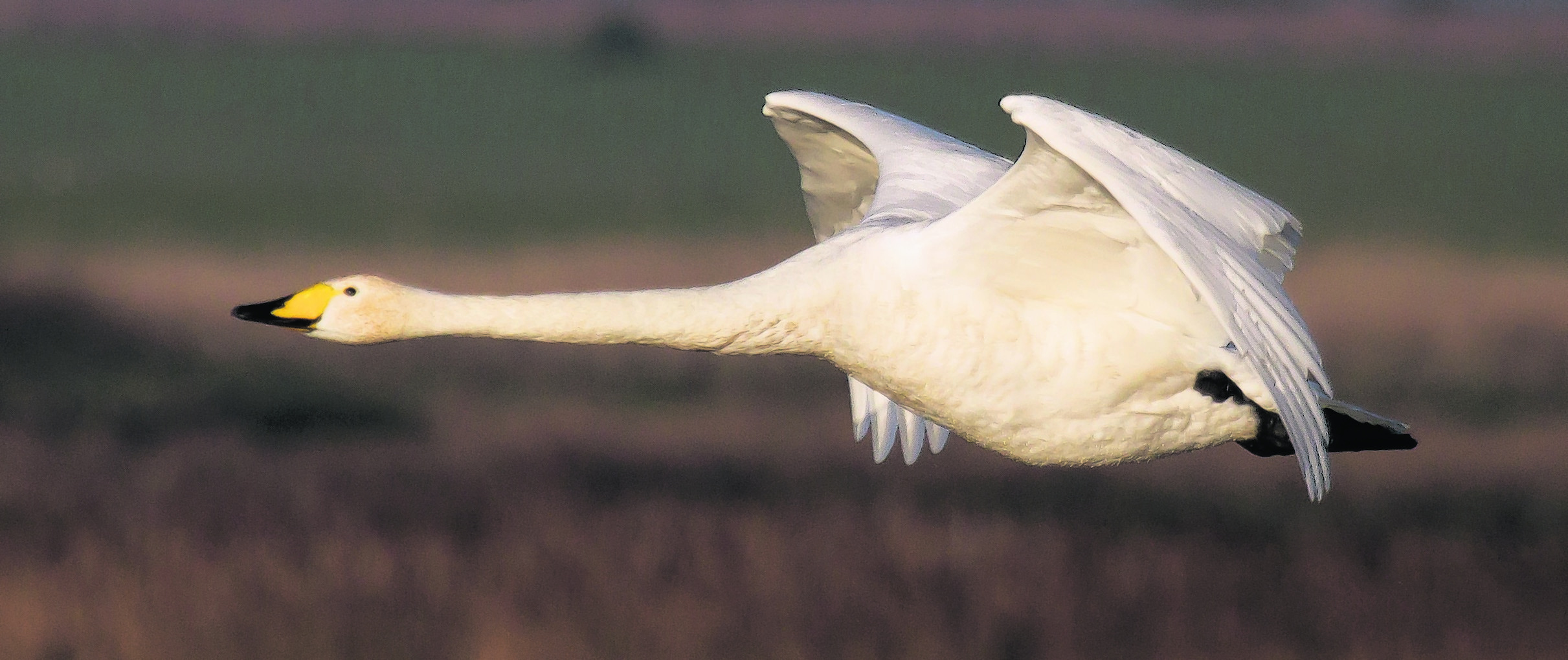If you were inspired by TV’s Autumnwatch, or are looking for an excuse to blow away the winter blues, Ian Hay, of the East Grampian Coastal partnership, shares his perfect ‘wild’ day out
Many of the best wildlife experiences start with a build-up of sound. For example, the call of tens of thousands of seabirds at the RSPB Fowlsheugh Reserve near Crawton, south of Stonehaven, or at the Bullars of Buchan. This is also true of an autumn visit to the Loch of Strathbeg, near Crimond.
As soon as I get out of the car, the assault on the senses begins: powerful wingbeats of swans can be heard approaching low overhead while hundreds more can be heard honking in the distance. The higher-pitched chatter from the skeins of geese far above add to the soundscape.
The RSPB Loch of Strathbeg Reserve covers a large area and includes a wide range of habitats. The dune loch is the largest in Scotland, yet is only a couple of metres deep, making it ideal for ducks and geese. The loch is surrounded by reed beds and boggy woodland.
Between the loch and the reserve’s visitor centre is a vast area of marsh and shallow pools; to the east, it’s sand dune and coast. This diversity of habitat makes this a great place to see a wide range of birds, with 200 species a typical tally for the year.
I start the day at the fen hide. This is reached by driving over a disused
series of runways and past huge listening towers. The walk to the fen hide is short and largely on well-made boardwalk. I must admit a love for boardwalk; being able to walk across habitat that would be impossible without these floating paths is very special. In this case, I am taken through a flooded forest that is smothered in lichen, followed by a reed bed just before you reach the hide.
From the hide, the view expands – thousands of ducks and a hundred swans are feeding on the lake while reed buntings and wrens feed in the reeds. A squealing pig-like sound gives away the position of an unseen water rail.
After a few minutes, I start to hear a piping sound as a group of very rare bearded tits fly in and vanish into the reeds close to the hide. These apricot-coloured gems of birds are not actually members of the tit family, but belong to a normally tropical group known as parrot bills. Males can be spotted by their stylish moustache stripes.
Soon, the bearded tits leave, “pipping” into the distance. While rarities such as these are great for the keen birdwatcher, it is the sheer spectacle that everyone should visit the reserve to enjoy. The sight of flock after flock of ducks flying close to the hide early in the morning in the autumn, or the sound as 20,000 pink-footed geese leave the roost, is impressive to hear at close distance.
But it is not just these sights that inspire. Each year, huge numbers of birds leave Britain for warmer conditions farther south. Yet all the time I was at the reserve, wrens (Britain’s smallest birds) could be seen feeding just outside the hide windows.
After a rather long time, I finally leave the hide and make the short walk and drive back to the visitor centre. This has everything you really need: toilets, a hot-drinks machine and a comfy chair looking over the reserve – this is wildlife viewing with comfort.
The views are extensive, covering a large area of marsh, farmland and a number of small pools close to the centre. During the winter, this is a great place to see short-eared owls hunting, while white-tailed eagles are seen on occasion.
During the summer, these pools are a hive of life with black-headed
gulls and common terns nesting on the islands close to the centre. It has to be said that birds nesting there have made a good choice, as they are protected by an electric fence and a moat, and some even get a house to nest in.
Once you have finished at the visitor centre, have a look around the gardens and nature trail by the car park, or go to Rattray Head to see the stunning dunes and lighthouse. This is a reserve for all seasons and one visit will never be enough.
To discover more wonders of the coast, visit www.discovereastgrampiancoast.com

